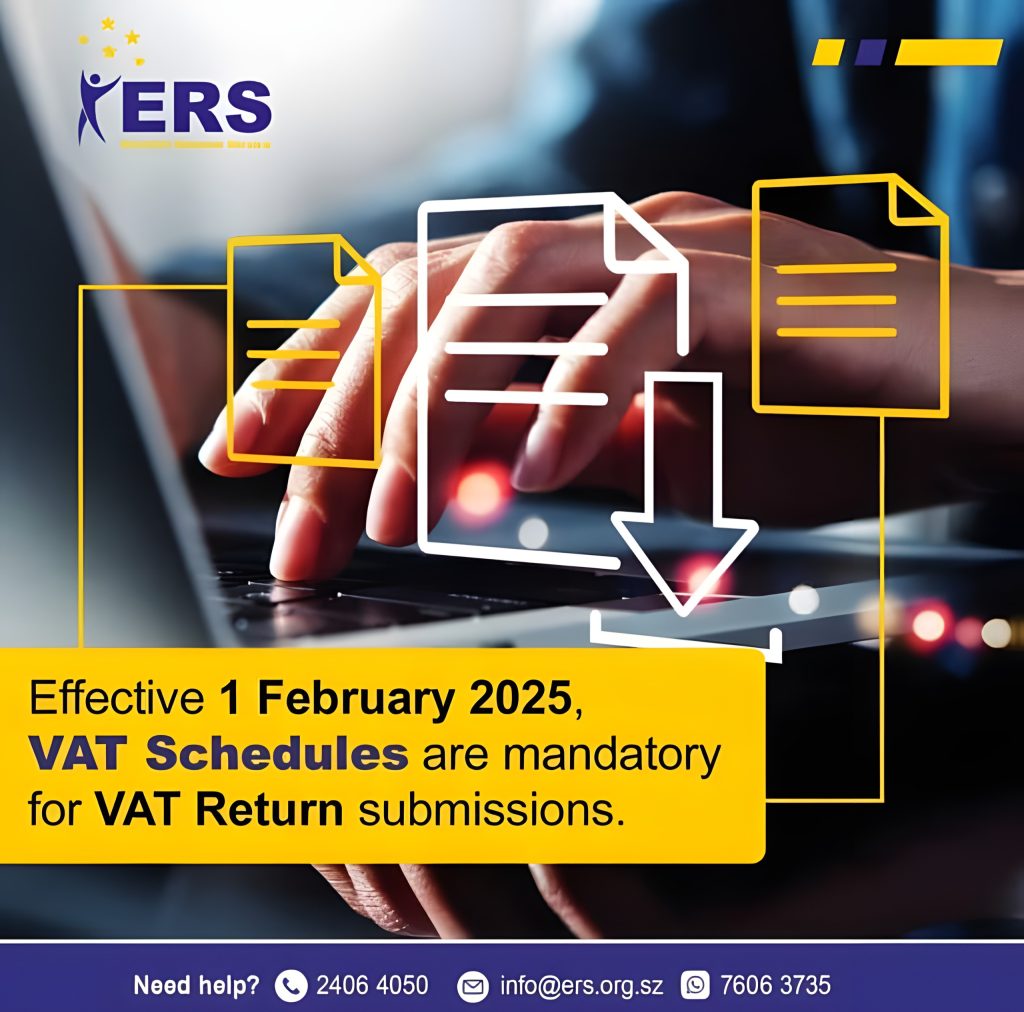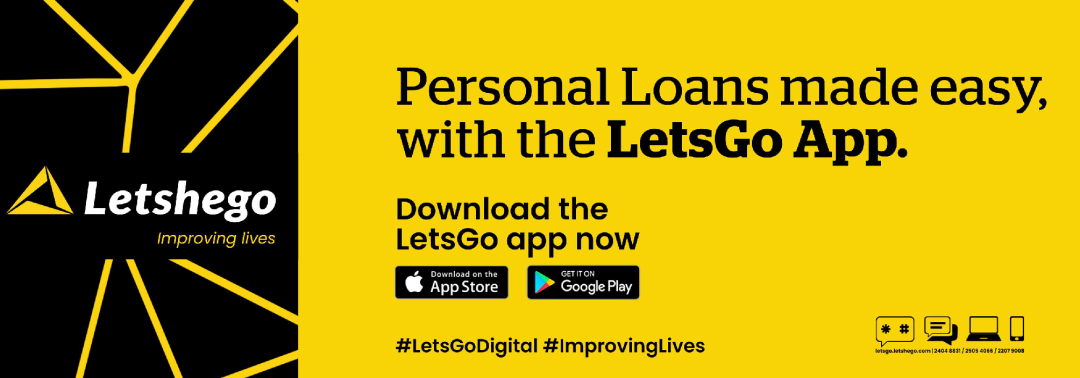
The Eswatini Revenue Service (ERS) has announced that effective 1 February 2025, all VAT-registered businesses must submit their Value Added Tax (VAT) returns using VAT Schedules through the TaxEase platform.
This marks the end of traditional VAT return submissions, a move aimed at improving accuracy, improving tracking of VAT reporting, and facilitating timely processing.
Although this requirement was initially introduced in October 2022, adherence has been inconsistent, prompting the ERS to enforce stricter adherence.
A VAT Schedule is a detailed, line-by-line report that VAT-registered businesses must submit. It itemizes all sales (outputs) and purchases (inputs) for a specific period, whether monthly or quarterly.
The schedule is prepared in an Excel spreadsheet, following an approved format that is available for download on the TaxEase filing platform. The VAT Schedule offers multiple benefits for both VAT-registered businesses and the ERS, ensuring improved reporting and streamlined verification processes.
Unlike the traditional VAT Return, which only summarizes the total VAT due or refundable, the VAT Schedule provides a comprehensive breakdown of each transaction, including:
- Customer/supplier name and Taxpayer Identification Number (TIN)
- Invoice numbers and dates
- Transaction amounts
ERS Director of Communications and Marketing, Ntobeko Dlamini, emphasized that the introduction of VAT Schedules aims to enhance accuracy and reduce errors.
“VAT Schedules allow for better tracking and verification of transactions, significantly reducing the risk of errors and fraud. Additionally, they facilitate the timely processing of submissions and help businesses maintain thorough and compliant records. This simplifies audits and also minimizes potential disputes with the ERS,” she explained.
To ensure compliance and avoid penalties, VAT-registered businesses are encouraged to track their transactions regularly and maintain up-to-date records.
One of the key steps is to download and update VAT Schedules in advance. Businesses should obtain the VAT Schedule template from the TaxEase platform, save it on their systems, and update it continuously as transactions occur. This helps prevent last-minute errors and delays when filing.
Businesses must also adhere to submission deadlines to remain compliant. For monthly filers, VAT Schedules, and payments must be submitted by the 27th of every month, while quarterly filers must complete their submissions by the 27th of the month following the quarter.
Maintaining accurate records is crucial for VAT compliance. Businesses should keep detailed transaction records, conduct regular internal audits, and use reliable accounting software to ensure accuracy. Additionally, staying informed about changes in VAT regulations helps businesses adapt to any new compliance requirements.
Failure to file a VAT Schedule correctly or on time may result in penalties and financial consequences. Businesses that miss deadlines will face penalties for failure to file, along with late payment interest charges of 2% per month or part thereof. Furthermore, interest will accrue on any outstanding VAT balances until full payment is made.
Dlamini emphasized that ERS remains committed to assisting businesses with the transition.
“Since introducing VAT Schedules, the ERS has supported businesses through online guides, tutorials, radio programs, and customer support services. We encourage clients to reach out whenever they need guidance,” Dlamini said.
Businesses can receive support from the ERS through:
- ERS Service Centres nationwide.
- ERS Contact Centre: 2406 4050.
- WhatsApp Support: 7606 3735.
- Email: info@ers.org.sz.
- Social Media: Facebook, LinkedIn, and YouTube.
- Website: www.ers.org.sz.

To further support businesses, the ERS is conducting physical engagements, online training, and workshops to ensure businesses understand and comply with VAT Schedule requirements.
By following these steps, VAT-registered businesses can stay compliant, avoid penalties, and benefit from improved tax reporting accuracy:
- Log in to the TaxEase platform using your credentials.
- Navigate to the VAT Schedule submission section.
- Select the correct submission period.
- Download new schedules whenever filing.
- Capture and upload your detailed schedule.
- Your uploaded schedule will populate your return summaries.
- Review the uploaded data for accuracy.
- Submit the VAT Schedule and receive a confirmation receipt.






